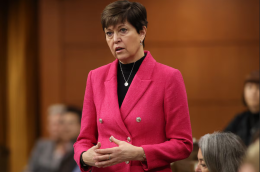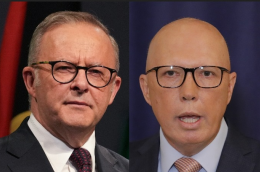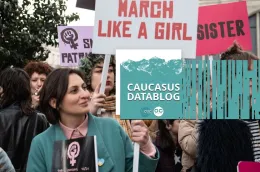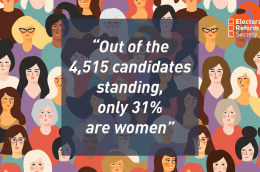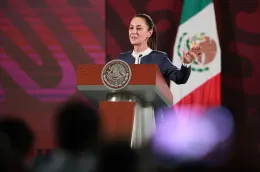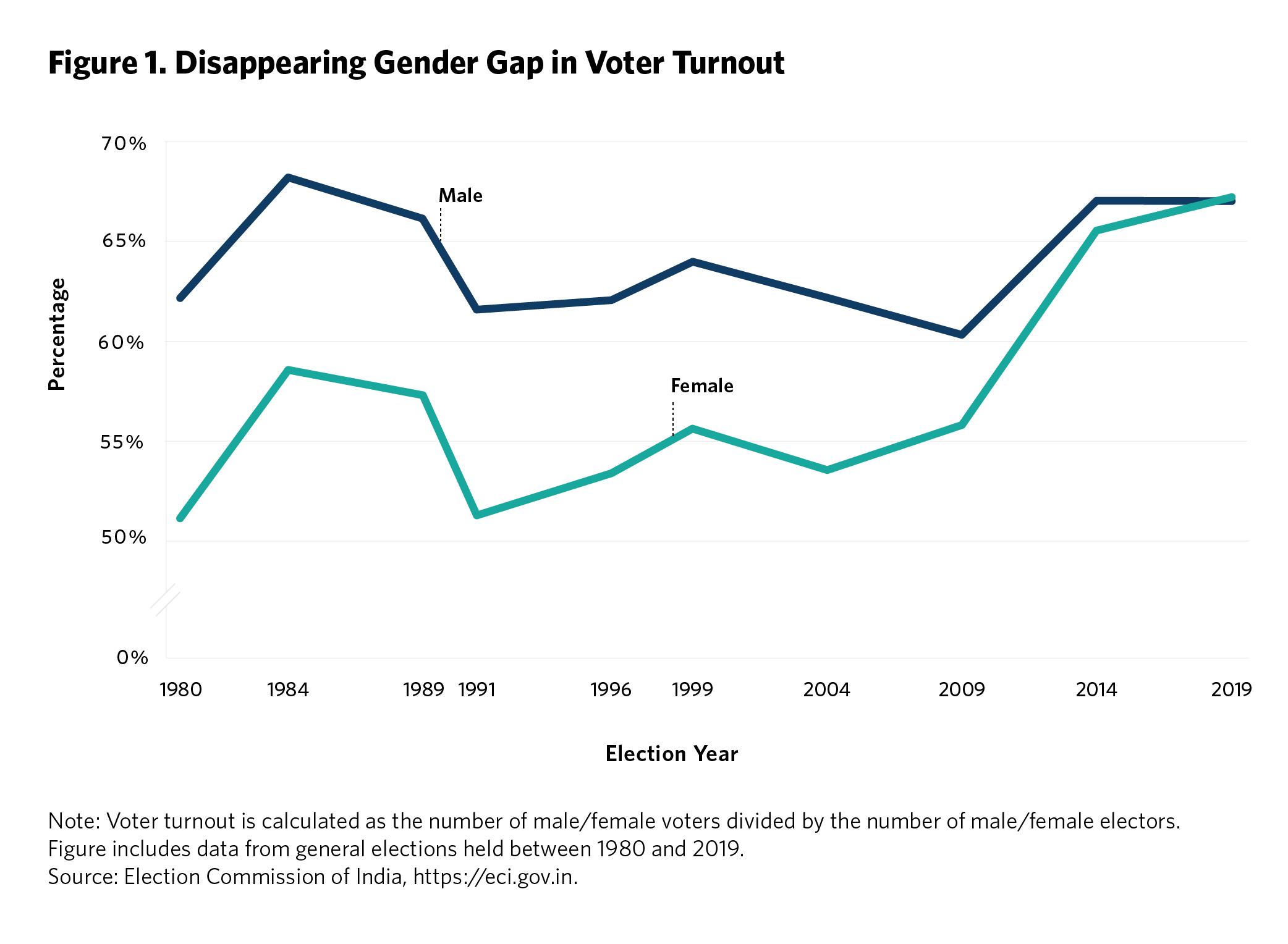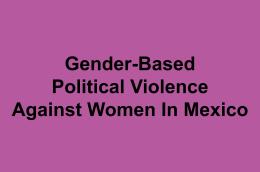Elections
Main navigation
The number of female candidates running for federal office has dropped in this election, a fresh analysis shows, raising fears that this will make gender parity in the House of Commons a more distant prospect.
The main political parties except the NDP have fewer women standing compared with the 2021 general election, while the number of visible-minority candidates has also dropped for the Liberals and NDP.
Andrew Griffith, a fellow of the Environics Institute and a former director-general in the Immigration Department, who carried out the study with Professor Jerome Black, former chair of McGill’s Department of Political Science, said he was surprised by the reversal of the trend toward more female candidates since 2011.
The Conservative Party has seen a drop of almost 10 percentage points in the number of female candidates it has fielded compared with 2021. While a third of its candidates were women last time, now only 23 per cent are female, the analysis shows. The Liberals have seen a decline of about 6.5 percentage points, from 43 per cent to 36.5 per cent this time, according to the study.
Read here the full article published by The Globe and Mail on 23 April 2025.
Image by The Globe and Mail
The Women’s Fund of Central Ohio recently commissioned original research to uncover the barriers and accelerators women experience in building wealth in our region. We worked with The Center for Community Solutions to survey over 3,000 women from across Central Ohio and conduct focus groups with 126 women of varying identities, backgrounds, and life experiences.
The research, published in “Making Women Wealthy and Free” demonstrates that building financial stability and wealth has many outcomes, including increasing women’s representation in decision-making spaces. This in turn creates systemic changes that benefit women, families and communities.
Michele Swers, a political scientist at Georgetown University, has conducted research that shows that when women are elected to Congress, they tend to focus more on issues that impact women, like paid leave and intimate partner violence, than men do. The problem is women are still vastly underrepresented in political office. Currently, only 28.2% of Congressional members are women. What will it take for more women to run for office and win?
Our research shows that women candidates in Central Ohio experience challenges running for office for the following reasons:
-
They don’t feel like standard campaigns are structured or designed for them or their families.
-
They are expected to oversell themselves and their qualifications, something they don’t feel men are asked to do.
-
Women candidates feel they have to be assertive, especially when asking for campaign funds, but not too assertive, or they could end up being viewed negatively, which doesn’t help them.
-
The common stereotype that women are bad at fundraising makes it harder to raise money as a candidate and can be a barrier to running for office in the first place.
We found that women need access to more affordable childcare, paid leave, and more flexible work schedules to find a balance that works for themselves and their families. To accomplish these policy victories, public and private stakeholders and advocates have to work together.
When women build wealth for themselves, our entire economy is better off. Women need policies that will help them do that, and we know that women elected officials are more likely to make those policies a priority. Electing more women is good for families, our communities, and our country. Working to remove the barriers women face in running for office and winning is essential to fighting for the policies benefit all of us.
Read here the full article published by Gender On The Ballot on 15 April 2025.
Image by Gender On The Ballot
Is gender the sleeper issue of this election?
According to research to be published later this week by the ANU, the views of women and men in Australia are becoming more divided.
Researchers found the number of people who believe Australia has gone "too far" in promoting equality has doubled to 19 per cent.
What's more, the data suggests that gender and politics are getting more polarised and the views of women and men more divided. It is consequential for how we understand this election.
There was a moment in the second election debate where the leaders were asked to make a choice about what they regarded as their signature legacy policy.
Anthony Albanese nominated universal childcare as the change he most wanted to be known for as prime minister. Peter Dutton nominated his legacy wish as affordable energy, starting with his gas reservation plan and nuclear power stations.
The answers spoke volumes about not only their priorities and personal passions, but also who they were overwhelmingly talking to in the election campaign.
Read here the full article published by ABC News on 20 April 2025.
Image by ABC News
A recent UN Women and CRRC Georgia study has found that the vast majority of Georgians find it important to work towards a more equal society.
The survey focused on a wide range of issues related to gender equality in Georgia, from the need for quality childcare services to women’s representation in politics and business.
According to the data collected, between 79%–98% of respondents believed that improvements in social and police rights, more equal sharing of domestic work, and a greater representation of women in leadership positions were important for Georgia’s future.
Looking at the role of women in leadership positions specifically, 79% believed that more opportunities for women in business was important; 77% believed the same for women in politics; and 75% believed it was important for women to have more opportunities in decision-making roles writ large.
The survey also assessed attitudes toward fundamental rights and social policies. A large majority (83%) considered improved access to higher education for women important. A similarly large majority (84%) supported affordable healthcare for women. The idea that respect for women’s rights in all areas is essential for the country’s success had 91% agreement.
Read here the full article published by OC Media on 22 April 2025.
Image by OC Media
Despite progress towards gender equality in Australian elections, women remain underrepresented among candidates vying for office on May 3. They are also overrepresented in “glass cliff” seats, which are the ones that are difficult to win and precarious to hold.
The Global Institute for Women’s Leadership at the Australian National University has analysed 591 candidates in the election by gender, political party, and the seats they are contesting.
Our report published today finds that while the major parties are increasing the number of women they pre-select, they are more likely to be running in harder-to-win seats.
From the glass ceiling to the glass cliff
Women are inching towards gender parity and now make up 45% of candidates across all parties and independents.
Labor has made the strongest gains. More than half (56%) of its candidates are women, a jump of about 10 percentage points on the previous election. By comparison, only 32% of Coalition candidates are female, an increase of just 3% on the 2022 poll.
Coalition women are not only outnumbered two to one by male candidates – 84% of them are running in risky glass cliff seats.
Read here the full article published by The Conversation on 9 April 2025.
Image by The Conversation
While some progress has been made towards gender equality in Australian elections, women remain underrepresented among candidates in the 2025 federal election, a new report from The Australian National University (ANU) shows.
The report published today by the Global Institute for Women’s Leadership at ANU shows fewer women than men running in the election. They’re also more likely to be running in ‘glass cliff’ seats that are hard to win and precarious to hold.
While women make up more than half (56 per cent) of the candidates being put forward by the Australian Labor Party (ALP), less than a third (32 per cent) of the Coalition’s candidates are women.
According to report co-author, Dr Elise Stephenson, there has been a notable increase in women’s representation for Labor this election compared to the last one, when 46 per cent of its candidates were women.
Read here the full article published by ANU Reporter on the 9 of April 2025.
Image by Australian National University Reporter
